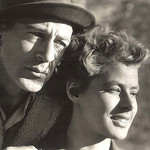
If you are lucky enough to have lived in Paris as a young man, then wherever you go for the rest of your life, it stays with you, for Paris is a moveable feast.
― Ernest Hemingway, A Moveable Feast
Everyone’s commented on it: Hemingway’s preoccupation with women’s hair. Hemingway’s mother, Grace, whom he purported to hate, had auburn hair that was her pride and joy. She wore it often in the Gibson girl style of the day and was quite proud of it. In almost every work of fiction that Hemingway has written–and nonfiction if you want to count A Moveable Feast–the time spent on the description of any of the main woman’s character’s hair is significant.
Lady Brett Ashley in The Sun Also Rises had short, swept back hair. She wears it cut “short like a man.” Catherine Barclay had soft hair and “wonderfully beautiful hair. “I would lie sometimes watching her twist it up in the in the light that came in the open door and it shone even in the night as water shines sometimes just before it is really daylight.” From A Farewell to Arms.
Maria, whom Robert Jordan called the rabbit because of her short-cropped hair cut off by the Fascists who gagged her with her own braids which was growing out, had hair the “color of wheat.” See above, Ingrid Bergman as Maria. Gary Cooper as Robert Jordan. In The Garden of Eden, the wife cuts her hair to match her husband’s and they both are attracted to the same woman. The Garden of Eden, however, was published posthumously and as I’ve noted in earlier posts, I don’t think the same standards can be applied to something published after the author’s death since clearly he hadn’t felt it was ready to be published at the time of his death. A huge editing may have 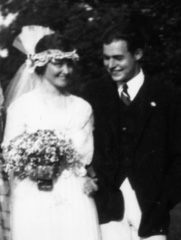 in the offing.
in the offing.
In his actual life, Hadley had lovely red hair. Shortly after their marriage she cut it short. It’s not clear whether she did so to please Hemingway or just for ease of care after she had Bumby. Hemingway seems to be one of the few men who prefer women with short hair.
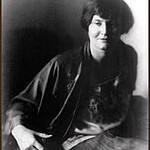

Pauline had a boyishly short pixie cut. She had very dark hair and it was quite stylish on her. Hemingway liked it. At one point during their marriage, when he was clearly attracted to Jane Mason, a socialite and a stunning, legendary strawberry blond, Pauline dyed her hair blond and arrived home with this completely new look. There is no record of whether Hemingway liked it or reacted to it but she didn’t keep it blond for very long.
Martha had swinging long, blond hair when Hem met her which at times was shorter. 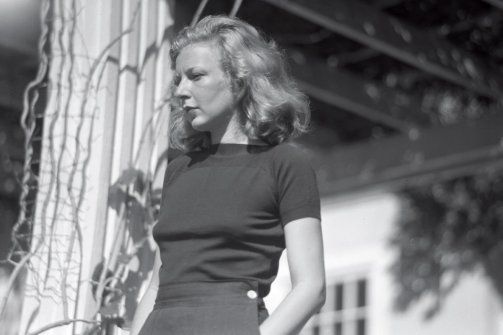 had short, swept back curly blond hair that framed her face.
had short, swept back curly blond hair that framed her face.
From their first meeting, Hemingway and Gertrude Stein were simpatico. They did have a falling out several years later and despite the fact that Gertrude Stein clearly was living in a lesbian relationship with Alice B. Toklas, he maintained that there was a true animal attraction and that at least from his end he would have liked to have consummated the relationship had the situation been different. He describes Gertrude as having lovely dark immigrant hair and the sentiment is one of admiration. Her hair also was short and swept back at times, a style Hem favored, and at other times, longer and pinned up.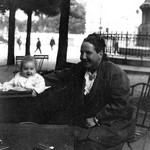
Scholars have pondered for years about whether this preoccupation came from the fact that Hemingway’s mother dressed him in girl’s clothes from a young age. She often represented to outsiders that he and his sister, Marcelline, were twins (they were about a year apart) and Grace maintained his hair at a feminine length.
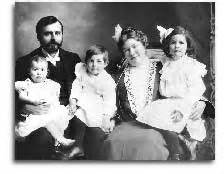 . On occasion she called him Ernestine until he was about 6-years old. At that point he rebelled and demanded a hair cut and boy’s clothes as well as to be called by his real name. We can get psychological about the implications .
. On occasion she called him Ernestine until he was about 6-years old. At that point he rebelled and demanded a hair cut and boy’s clothes as well as to be called by his real name. We can get psychological about the implications .
While too much can be made of this element of Hemingway’s writing, it is something to think about and it is an interesting theme that runs through the novels in particular.



I think you should’ve led with the fact that anyways mother dressed him as a girl for six years. It would have made all that followed a lot more understandable.
Hemingway certainly had issues with women. And probably his own sexuality.
Didn’t he grow his own here to some length, whileliving and working in France? I wanted to make love to you Alice B. Toklas. Maybe you wanted to do that well he had his long hair.
That he was forced into playing the part of a girl as a child also explains his hyper masculinity as an adult.
Good points, Dave. One of the biographies of Hemingway focuses on that point and the long standing insecurities from the mother’s treatment and presenting Hem and his sister Marchelline as twins: both girls! Thanks for reading. I really appreciate it and your observations. Thank you again. Best, Christine
Whoa I’d never heard that and I consider myself a buff – better do some research 🙃 that would confuse any young boy. Mothers!
Thanks, Dave. Good points. I appreciate your observations and comments. The biography by Ms. Dearborn (her first name is eluding me at the moment) stresses the relationship with his mother and the problems and her oddities as a basis for some of this orientation and behaviors. Thanks again, Dave, for interest in Hemingway and sharing your thoughts. Best regards, Christine
Victorians – especially upper middle class – had an affectation to keep small boys dressed in gowns, and not cut their hair until they reached the age of five, or so. “Scholors” often overlook historical norms when defending a thesis; perhaps this is an instance when too much emphasis has been placed on the possible psychological effects on Hemingway as an adult.
Great article, Christine – Hem did have the affinity for hair styles within his writing style. If I remember correctly. the description of Pilar’s hair in FWTBT was a close comparison to Gertrude Stein’s. Maria’s hair in the book, of course, dealt directly with the plot motives of the characters. As did the hair motif in TGOE.
I agree, Timothy. I read a biography recently in which much “blame/emphasis” was put on his relationship or lack thereof with his mother. Sure, she was a strong persona and of influence, but i think it is a bit much to put that much on it. So much went into Hemingway being the way he was, as you can say about virtually everyone. And i agree that all has to have the context of its time and the habits then. Thanks for input and comment! I really appreciate it. Happy New Year, Timothy. Best, Christine
Christine & Timothy,
I like the de-emphasis on blaming/shaming AND appreciate the reminder to consider historical context!
Clumsy segue, but topic-adjacent: I feel that many times, historical figures’ mothers get it hardest. It’s rare for an exposE to center on an artists’ abusive/absent father – maybe because it’s so common that it’s not interesting. But everyone loves to hate a sinning woman.
OH but then Hem. went & shot himself like daddy 😔💔
Best & Happy reading and writing,
Molly
Dear Mollie! Thanks for commenting. So true. Mom is not always to blame. Part of the whole of course but Hemingway was complex and i don’t know what “stew” made him what he was. He was interesting and complicated. always intriguing. Thanks, Mollie! Best to you. Christine
Thank you so much for writing, Molly! Yes, without context it is easy to accuse and shame. I so appreciate your thoughts. Just watched the pbs bio. I thought it was fair. But the way, some how I did not get notice of your comment. Just saw this and real apologies for not replying timely. I love to hear thoughts and comments. Thank you again. Best! Christine
I was just reading A Moveable Feast which has a chapter with Hemingway talking about growing his hair out. I found it interesting since we picture him as being so old school macho,you think he would have hated the idea of long hair men. It didn’t seem to be a big deal at the time compared to say the 1960’s with The Beatles and that backlash. Theres also a comment from someone who says it’s a nice reaction to short hair and the war which predates the hippies by decades.
Good observation, Joe. And yes, he liked it when Pauline had short or colored hair. He commented on Gertrude Stein’s hair more than once. His books often reference women’s hair. And yes, his hair was sometimes longer than the style of the day. Lots of complexities to the man! Thank you so much for reading and commenting and for being interested in Hemingway. Very best for the holidays! Christine
Christine, your post made me want re-read a Hemingway novel I first read as a teenager in which the lead woman cuts or colors her hair so that her man can have another lover without having another woman (a scene that could invite more Hemingway male fantasy psychoanalysis). Do you remember which novel that is?
Yes, Tiffany! The Garden of Eden. Very cutting edge. Unpublished until after Hemingway’s Death. Experimental and quite interesting! Time for me to re-read as well. Thank you for writing! Good to hear from you. Best, Christine